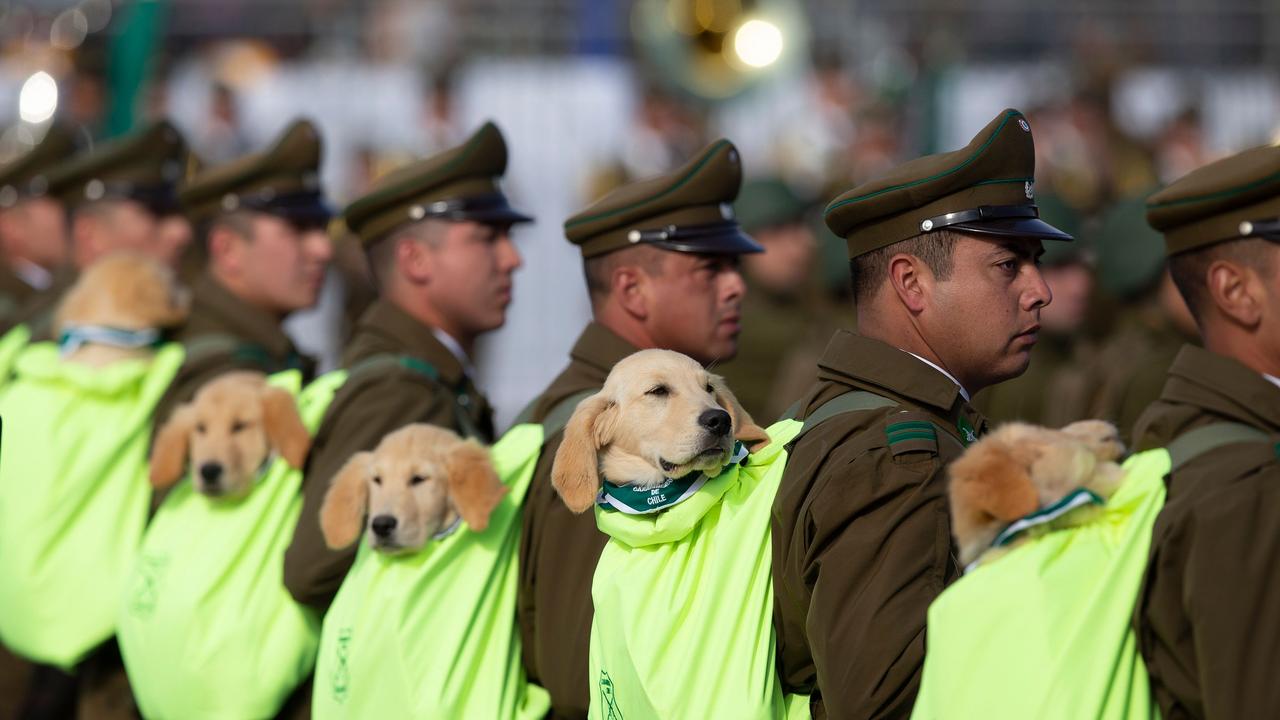Meet Spot: The robot ‘dog’ that could put canines out of a job
Dogs have performed vital work for humans for thousands of years. Now a robot is coming for their job.
Robots have been coming for our jobs for years — everything from checkout assistants and forklift drivers to accountants and human resources workers, but now they’ve added a more unlikely target: the humble dog.
Robotics company Boston Dynamics has developed a four-legged robot capable of climbing stairs, opening doors and carrying loads up to 14 kilograms (around the weight of your average beagle).
The doglike robot, named Spot, has been designed primarily for industrial applications to begin with, and the company is currently accepting applications from companies who have a task in mind for Spot to get their hands on one.
Spot is customisable and can have up to four modules installed on its back, allowing it to perform a variety of different tasks in construction, the resources industry and logistics.
There’s also a potential Spot could be used for police and military applications, either as a reconnaissance robot or for more dangerous applications such as bomb disposal.
Boston Dynamics first gained prominence through the development of a similar four-legged robot, funded by the US military and designed to transport equipment and accompany soldiers in rough terrain where vehicles would be less effective.
That robot, called BigDog, was shelved after it was decided it was too loud for combat situations.
Despite its military history, Boston Dynamics vice-president of business development Michael Perry recently told The Verge that the company wasn’t interested in Spot being weaponised.
“Fundamentally, we don’t want to see Spot doing anything that harms people, even in a simulated way,” Mr Perry said.
RELATED: Sex robots are here: Are they therapeutic or gross?
While currently Spot is intended for work applications, it might not be too long before it begins expanding its capabilities.
Boston Dynamics demonstrated earlier this year that Spot was capable of having a little fun as well, releasing a video of the robo-dog dancing to the Mark Ronson and Bruno Mars hit Uptown Funk.
The company has also approached Cirque du Soleil to gauge interest about using Spot on stage.
WORKING LIKE A DOG
If Boston Dynamics’ robot dog does manage to make the transition out of pure work applications, it wouldn’t be the first dog to do so.
The domesticated dog as we know it traces its origins back thousands of years to early human ancestors interacting with wolves.
RELATED: The shocking signs your pet has been baited.
Scientific debate still rages over how the wolf was domesticated and split off to evolve into the dog, but their relationship with humans has developed and maintained through their ability to work and take direction as much as through their companionship traits.
From early days of hunting, later agricultural applications like sheep herding, through to assisting the blind and sniffing for drugs at the airport, dogs have worked alongside humans for a long time.

But our human-canine links now stretch far beyond work.
Most people now depend on dogs primarily for companionship and emotional support, and it seems they do the same for us.
Recent research published by Royal Society Open Science reported the further removed a dog was from its wolf ancestors the more they relied on humans for help.
Human-directed gazing is a large part of a dog’s interaction with people, whether they’re looking for help, direction or praise.
Researchers tested three breeds of dog by placing food under a metal colander and letting the dog figure out how to get to their next meal.
They then bolted the colander down so it would become impossible to move and recorded how much the dogs looked to the people around them for help.
Czechoslovakian wolfdogs, genetically close to the wolf, rarely gazed at their owners and the experimenters for help, while the more domesticated labrador retrievers were more reliant.

Although Spot is outfitted with a suite of cameras that enables it to see in every direction, it’s unlikely to engage in similar gazing behaviour, as it can be directly controlled by humans anyway.
Gaze behaviour is also the reason dogs will look at you when they go to the toilet — they’re not looking for an audience but relying on us to look out for them while they’re at their most vulnerable.
Technology is attempting to adopt a friendlier face through conversational voice assistants like Amazon’s Alexa and Apple’s Siri, but while it’s becoming clear robots may be able to perform a variety of the dog’s work-oriented tasks, it’s unlikely they will manage to replicate the more special relationships between humans and canines any time soon.
Would you let a robot into your home? Let us know in the comments below.



